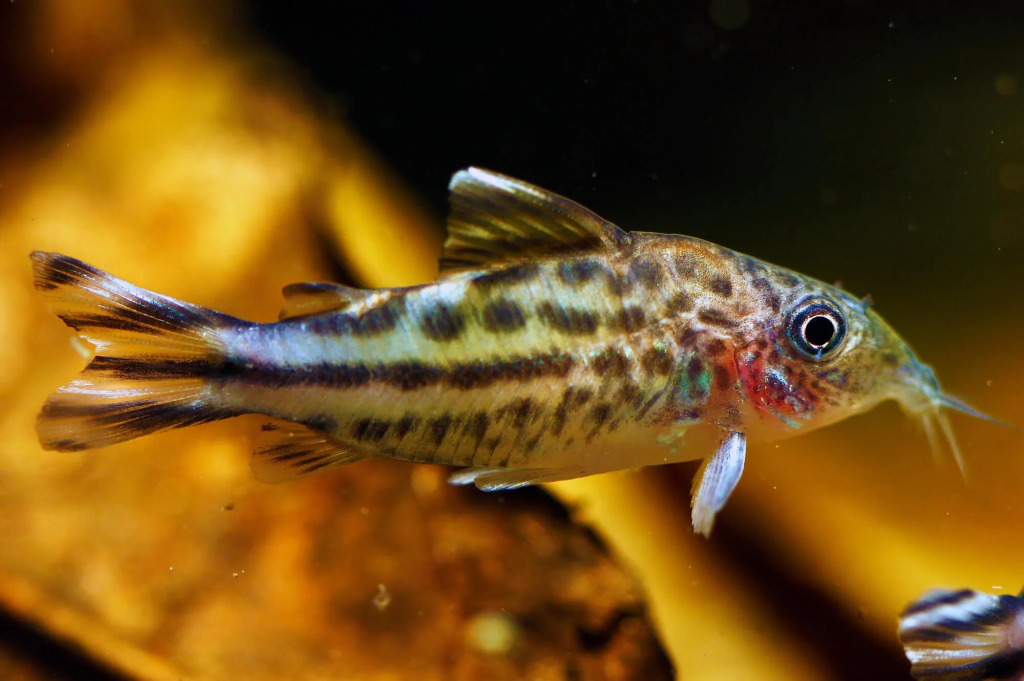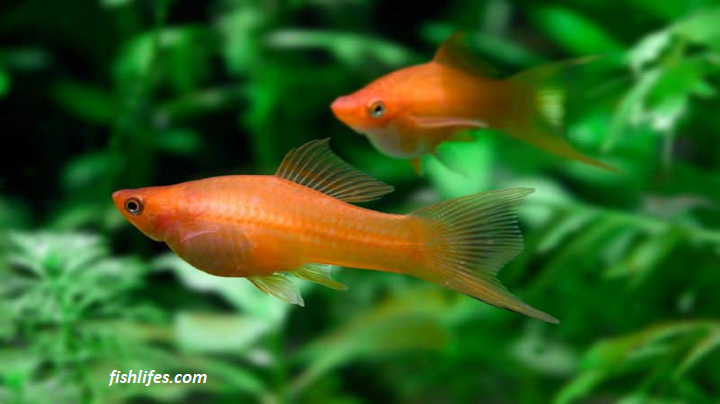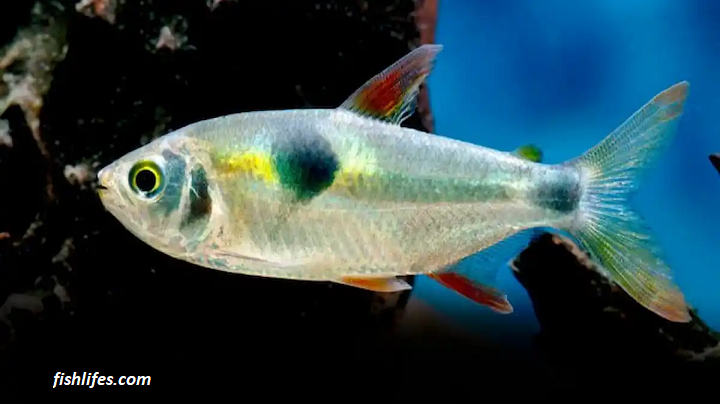Flagtail Catfish is an excellent addition to any aquarium. They are peaceful, small in size, and easy to care for. This article will provide an overview of Flagtail Catfish care and the steps you need to take to ensure your fish stay healthy and happy.
Flagtail Catfish Care
Flagtail catfish, also known as the South American Tiger Shovelnose Catfish, is a freshwater fish native to Central and South America. These fish are characterized by their elongated bodies and large eyes, which may vary from yellow to green depending on the species. It is one of the most popular aquarium fish due to its attractive markings and playful behavior.
These catfish have an exciting diet consisting of both plant and animal matter. They use their barbels, which are located near their mouth, to search for food items such as worms, insects, small crustaceans, and other aquatic invertebrates living amongst the substrate (bottom material).
They will also feed on plant matter, such as algae or pieces of vegetation found in their natural environment. To ensure proper growth, these fish should be fed a variety of foods at least two times a day.

How big do Flagtail Catfish get?
They usually grow to an average size of 8-12 inches. However, they can reach up to 24 inches in length as adults. This makes them one of the largest catfish species available in the aquarium hobby, and they are prized for their large size and unique looks.
Is Flagtail Catfish Aggressive?
Flagtail catfish are generally not overly aggressive and usually ignore other fish species. However, when it comes to territoriality, these fish may become competitive for food and space with other aquarium inhabitants.
Flagtail Catfish Behavior
Flagtail catfish are an increasingly popular fish species among aquarium hobbyists. Although they are relatively easy to care for, understanding their behavior is key to providing them with the best living environment possible.
These fish usually live in groups and tend to be quite social animals. During the day, their main activity is foraging for food along the substrate of their tanks or rivers. At night, you may find them hiding in caves or crevices unless disturbed by bright light; if startled, they can jump out of the water! Flagtail catfish also like to dig up submerged plants and burrow into soft sand, so your tank must have enough of this material available.
Additionally, as these fish typically prefer hard alkaline water conditions, it’s essential that proper testing and maintenance are carried out regularly when caring for them in an aquarium setting.
How Long do Flagtail Catfish Live?
These vibrant and colorful fish may live up to 10 years in the wild if given proper care and nutrition. Regular feeding, frequent water changes, and a healthy tank environment are all factors that influence how long Flagtail Catfish can live.
The average lifespan of Flagtail Catfish is typically 5-7 years when kept in an aquarium. However, with the proper diet and care routine, they may live even longer—up to 10 years or more.

One Look Care Guide
| Scientific name | Flagtail catfish |
| Care level | Easy |
| Native to | Amazon, South Africa |
| Type | Freshwater fish |
| Color | Silver, Black, and white |
| Tank size | 20 gallons for one fish |
| Preferred temperature | 77-82 F (25-28 C) |
| Breeding | Bubble nesting, Hard to breed in captivity |
| Feeding frequency | Few times per day |
| Preferred food | Brine shrimp Bloodworms Mosquito larvae and Some aquatic plants, Commercial foods (pellets, frozen foods) |
| Recommended tank mates | Bleeding Heart Tetras Black Widow Tetras Rainbowfish medium-sized Rasbora species Corydoras catfish medium-sized Loricariids |
| Temperament | Peaceful |
| Growth rate | Medium |
| Size | 4.9 inches (12.5 cm) |
| Preferred salinity | Freshwater fish |
| Other water parameters (ammonia, etc.) | pH: 6.0-8.0Hardness: 5-20°H |
Flagtail Catfish Care
Flagtail Catfish Size
These fish typically grow up to eight inches in length and should be kept alone or with other species of similar size for safety reasons.
Flagtail Catfish Tank Size
Ideally, an individual flagtail catfish should have access to at least thirty gallons of water; if you plan on having multiple flagtails together in one tank, you should offer them fifty gallons or more of space.
How Many Should Flagtail Catfish be kept Together?
The number of flagtails that can safely inhabit the same aquarium depends on the tank size and other conditions. It is generally recommended to have a minimum of four fish when keeping these species together, but more than ten can often lead to a decrease in water quality over time.
To ensure a healthy environment for your flagtails, it is important to consider all factors, such as tank size, food availability, and water parameters, before stocking up your aquarium with too many fish.
Tank Setup
Flagtail Catfish are popular aquarium fish for their unique shape, bright colors, and dynamic behavior. Flagtail Catfish can be a great addition to any home aquarium with the correct tank setup and proper care. To ensure your Flagtails stay healthy and happy, you must take several necessary steps to set up their tank.
Tank setup for Flagtail catfish care is important to keep these fish healthy and happy. Flagtails are a peaceful schooling species that can reach up to 8 inches in length when fully grown, requiring a tank size of at least 55 gallons.
To keep the water quality high enough for their needs, it’s best to use an aquarium filter with sufficient power. A good starting point would be a filter rated for four times the volume of your tank. It’s also essential to ensure that the aquarium is well-planted with live plants and plenty of hiding places.
Flagtails enjoy swimming among vegetation and having plenty of places to hide away from bright light when needed. Additional decorations such as driftwood or rocks should also be included to provide additional hiding spots and aesthetics.
Water Quality Condition
They require special care, including attention to the water quality conditions of the tank. Aquarists should be aware of the various aspects of water quality and how they impact their flagtail catfish’s health.
Water temperature is one of the most important factors in flagtail catfish care. The optimal temperature for these fish ranges from 73-81°F, so aquarists should ensure that their tanks are kept within this range at all times. Additionally, pH levels should remain between 6 and 8, with a slightly acidic option being preferable. Ammonia and nitrite levels need to be closely monitored and kept at 0 ppm as even low levels can cause stress or illness in these fish.

Flagtail Catfish Breeding
Flagtail Catfish Male or Female Identification
When it comes to identifying male or female Flagtail Catfish, there are several distinct characteristics that can help differentiate between the sexes. Male Flagtail Catfish tend to be larger with more prominent fins than the females, and they often display bright colors such as orange or yellow stripes on their bodies.
Females look similar in size but have more rounded bodies, less noticeable fin rays, and may not show any color variation at all. Additionally, males feature a more pointed anal fin, while female anal fin has a rounder shape.
Flagtail Catfish Breeding
The most reliable way of determining gender accurately is by looking at their genital papilla area, which is located on their belly near where the pectoral fins meet.
Condition The Fish
To ensure the success of any breeding program, the fish must be conditioned for spawning. This process should be done gradually over time to give them time to adjust to their new environment.
It is important that they receive a balanced diet with plenty of proteins and vitamins. Feeding them high-quality feed will help condition their bodies and prepare them for reproduction.
Stimulate the Breeding
Flagtail Catfish breeding is a rewarding experience. It cannot be easy to induce the fish to breed, but with the right environment and care, it is possible to stimulate breeding.
Flagtail Catfish are native to tropical regions of South America and prefer an aquarium with soft or slightly acidic water that has plenty of hiding places. The temperature should range between 79-86 degrees Fahrenheit, creating an ideal habitat for these fish which will help stimulate their desire to reproduce.
In order to trigger spawning, you must provide suitable conditions such as dim lighting and a water pH between 6.5-7.0 with a high level of oxygenation in the tank; this can easily be achieved by adding an air stone or filter system in the aquarium.
Add Nesting Materials
In order to give your catfish the best chance of spawning, it’s important to provide them with nesting materials in their aquarium.
Aquarists should start by finding a suitable tank for their flagtail catfish – one that has plenty of space and is heavily planted with hiding places for the adults and fry (young). When setting up the aquarium, adding suitable nesting materials is key in encouraging spawning behavior from the flagtails.
This can include pieces of driftwood and rocks as well as flat stones or clay pots laid on their sides at various angles around the bottom of the tank.
Flagtail Catfish fry Care
Despite their easygoing nature, flagtail catfish fry requires some special attention during the first few weeks of their life cycle.
When caring for flagtail catfish fry, make sure you start with a large enough tank or container that each fish can swim freely without getting overcrowded.
It’s also important to provide plenty of hiding spots in the form of live plants, driftwood, and rocks that create sheltered areas for the fry. When selecting food for your flagtail catfish fry, make sure it is small enough for them to consume; crushed flake food works best as it will sink quickly in the water column, where they can eat it more easily.
A 20-gallon tank should be more than big enough, but be sure it’s well-filtered and oxygenated so that the water remains clean for long periods of time without needing water changes or maintenance.
Feeding Behavior of Flagtail Catfish
What do they eat (In the Wild and in an Aquarium?)
They are omnivorous scavengers that feed on a variety of food items. In the wild, their diet consists mostly of plant material such as leaves, fruits, and other vegetation that they find near the bottom of streams and rivers.
In an aquarium setting, flagtail catfish need a vegetarian-based diet that includes freeze-dried krill, algae wafers, and blanched vegetables like zucchini or cucumber slices. They also have a taste for live food, such as brine shrimp or blackworms, if available. The fish should be fed in small portions throughout the day to ensure they receive all necessary nutrients without any leftovers settling at the bottom.
A combination of high-quality commercial foods supplemented with occasional feedings of live or frozen foods is ideal for providing these fish with all the nutrients they need for good health.
How often should you feed?
In general, flagtail catfish should be fed two or three times each day with a small amount, such as one to two pellets at each mealtime. It’s important to ensure that all food is eaten within 5 minutes, so there’s no risk of overfeeding or fouling the water in your tank.
When should you Feed (Time of the day)
Flagtail catfish are nocturnal creatures, meaning they come out at night and rest during the day. Generally, the best time to feed your flagtail catfish is in the evening, after sundown but before lights out. This allows them to feed without interruption from other fish or predators that may be active during daylight hours.
How Long They Can Go Without Food
It is well documented that flagtail catfish can survive for up to four weeks without food, though this will depend on the health and size of the individual fish. This ability is due to their slow digestion rate, which allows them to extract nutrients from their food more slowly than other types of fish. In addition, flagtail catfish will feed opportunistically when there are limited resources available in their environment, such as during times of drought or low oxygen levels in their water source.
What Fish Can Live With Flagtail Catfish?
When choosing which fish should share its tank with the flagtail catfish, there are a few things to consider. The size of the other fish should be similar to or smaller than that of the flagtail catfish, and they must also have similar water temperature requirements.
Additionally, it’s important for them to have compatible temperaments since aggressive behavior could result in the injury or death of one or both fish.
Some ideal tankmates for a flagtail catfish include barbs, rasboras, tetras, corydoras cats, and loaches.
Conclusion
In conclusion, the Flagtail Catfish is an ideal species for novice and experienced aquarists. With all its peaceful and social qualities, it is a great fish to keep alone or in a community tank. Its small size also makes it perfect for smaller tanks.
However, care should still be taken to ensure the water parameters are kept stable, the tank is well-maintained, and that Flagtails are provided with plenty of hiding spaces among the decorations.
Related Questions
What is the best way to feed a Flagtail Catfish?
Flagtail Catfish should be fed a diet of live or frozen foods like brine shrimp, bloodworms, and blackworms. They should also be given sinking pellets and vegetables like zucchini, cucumber, and squash. It’s important to feed your Flagtail Catfish small amounts several times a day instead of one large meal.
This will help ensure that all the fish in the tank are getting enough food.
What is the best way to care for a flagtail catfish?
Flagtail catfish prefer a large aquarium with plenty of hiding places. They should be fed a variety of live, frozen, and freeze-dried foods. The water temperature should be kept between 72-82 degrees Fahrenheit, and the pH level should be 6.5-7.2. Regular water changes are important to maintain optimal water quality.
Lastly, they should not be housed with aggressive tankmates as they are peaceful fish that can become stressed easily.
What is the smallest flagtail catfish that can be kept in a tank?
The smallest flagtail catfish that can be kept in a tank is the Blackline Flagtail Catfish, which grows to an average length of about 4 inches. It is a peaceful fish and can be kept with other small fish species. It does best in tanks with plenty of hiding places, such as rocks and driftwood.
Read More:







